Genre: Compilation Developer: Beam Software Publisher: Interplay Players: 1-2 Released: 1994
I found this title by looking to see if there were any more chess games for Sega consoles that I might not have heard of. I was surprised that 5 in 1 FunPak came up. It includes chess, so I had to check it out! Before chess, I’ll brush over the other four choices:
Checkers is the most well-known game here (besides chess), a favorite for young children everywhere. I didn’t expect there to be much to say about checkers, but the cartridge seemed to have a different idea of how it works! I had never before heard the phrase “in forced jump,” which was the message I got when I tried to jump over the first enemy. I had to Google it! While it seemed like it was preventing me from moving, it was apparently just asking which of two checkers I wanted to move – which is fine, but it could be a little clearer than announcing “in forced jump!” I think a lot of people will be confused at first, what that means.
If there is much depth to playing checkers in general, I’ve never known about it! Players move their checkers forward, jump over enemies, and reach the other side for their checkers to become kings, with more powers. It’s definitely fun, and I understand why kids love it. I can’t personally judge the degree of difficulty here, because I’ve barely ever played checkers in my life, but the games in this collection are generally considered easy, even on their hardest settings.
I dislike the color scheme. If there’s going to be only one display of graphics for a game, normal colors would make the most sense. For checkers, that would be red-and-black, like every plastic set that I’ve ever seen! Here, it’s red-vs.-gray, on a checkerboard of orange-and-pale-yellow. It really makes me wish they had just gone with traditional red-vs.-black, which I always thought looked quite nice.
The remaining three games (besides chess) were actually unfamiliar to me:
Backgammon is here with a board of brown, orange, pale yellow, and green. It reminds me of autumn scenery, but it looks strange for a board game. (I also looked up boards and they do come in slightly different colors, so this odd color scheme is somewhat arbitrary.) The pieces are also incredibly small, just a few pixels – almost hard to see at all!
I’ve literally never played backgammon, so I had no idea where to move the little pieces after rolling the dice, but I found that I could place them on certain stripes. I know it’s an old classic, but it has always struck me as boring. As a kid, I actually owned a cheap backgammon set, without ever being moved to try playing it. The box just sat in a pile of board games for my whole childhood, and likewise, I’m okay with this version just sitting in its 8-bit pile of games, without playing it. If the graphics were more appealing, then I might give it a chance.
I had never heard of the game “yacht” but I imagine that this is what rich folks play when they’re hanging out on their yacht! There are actually no graphics here at all, just a few dice at top of the screen, and the dice “roll” without moving from their spots. A list of text fills the screen, like a tally for different dice outcomes. This looks like one of the most boring games I’ve ever seen! The dramatic title screen also gave me the hope that there’d somehow be boats involved, which there are not! Yacht is said to be similar to Yahtzee, which is another game I was never interested in, despite owning as a kid. I’d occasionally take it out of the box to look at its dice, plastic cup, and instructions. Each time, I’d confirm again how boring it looked, and that I didn’t want to play it! Yacht gives me a similar impression.
Reversi is actually the most appealing game here (besides checkers and chess), and most people might not have heard of it before. Invented in late 1800’s England, Reversi has enjoyed some popularity in Europe, America, and Japan. It looks like a simplified version of Go, the ancient game of placing black and white stones on a grid. The clean, clear graphics are refreshing.
At first, it seemed unclear what the goal was, but soon I could see the basic premise of placing my pieces (disks) on either side of the enemy’s disks, so that their color gets “reversed” to my color. The winner is whoever collects the most disks. It takes a while to get used to, even after the goal is understood. There’s the constant threat of the opponent finding ways to reverse whole groups of disks to its own color! So, there are larger strategies for board placement, to somehow find areas where the opponent can’t place its color on both sides. Reversi is appealing for being so simple, yet so abstract. People might find themselves inspired to buy a physical set of Reversi (also commonly called Othello).
Finally, we have chess, the ancient and eternal game of kings! There is potential here, because there is only one chess title for Game Gear: The Chessmaster from 1991. Since this FunPak is from 1994, it’s possible for the chess software to be newer and more advanced! However, I rather expected an easy, mini-game style version of chess, as consistent with the rest of the collection. I wasn’t expecting chess to blow me away with strong difficulty, or amazing artificial intelligence!
Its title screen is promising though. “The Premier Chess Program.” Okay, so it might be a hidden gem with really advanced AI! I hoped it would impress me with its “premier” intelligence and gameplay. Its graphics, though, do not look “premier.” The colors are odd, like most of this collection. White pieces are gray, and black pieces are red. I don’t really mind gray-vs.-red, though, and the pieces have some cool 3D-style shadowing on them. I dislike the board itself, with brown-and-pale-yellow squares. The pieces also have an awkward design, and the knights look like cartoon horses. The pieces do look clear enough, though, if we remember that the ones that look like fat pawns, are the bishops! Sound effects are just chimes, and electronic bleeps and bloops.
I chose its top difficulty, six, in hopes of a challenge. Strangely, there is no timer to count how long each side spends thinking, so it’s trickier than usual, to measure how long the CPU takes to think. It can be rushed by tapping button 1, though, so we don’t have to wait for its thinking time. It sometimes moves instantly (when rushed), while other times it takes a few seconds to find a good move. So, that aspect seemed impressive at first, that it won’t be rushed until it finds a good move. Unfortunately, the “premier” impression fell away when my rook threatened its knight, who was in front of its queen. The knight retreated and left its queen vulnerable, its single most valuable piece!
So, that move was just broken, but I could give it the benefit of the doubt, that the brokenness came from the CPU being rushed. Fine, I decided to take-back that rushed move, and give it some time, to see if it would think of a proper response. I could use a hot shower anyway. 45 minutes later, it was still thinking! The situation on the board was pretty basic, and a person might spend three or four minutes thinking about it. The solution would be any move that would keep the queen safe. The simplicity of the problem, and its clear solution, made it a good way to check out the AI for the first time.
I checked about four hours later and it was still thinking, but then it did move soon after (when I was doing my laundry). So, it took about five hours total. To its credit, its solution worked – it moved its queen out of danger, and its threatened knight was then left protected by its rook. Despite taking hours, its AI might be functional and “premier” after all! I proceeded to play against it using the rush function, and I won soundly, but maybe just because I kept rushing it. The problem is that most people are not going to wait a few hours per move, so if the AI is lame when it’s rushed, then that’s what most people are going to see.
The Chessmaster (from three years earlier) can also be susceptible to rushed moves being lame, but it makes its top-difficulty moves within about 50 minutes, and it’s usually around 20 or 30 minutes. It’s still playable on top difficulty, which makes The Chessmaster a much better choice! “The Premier Chess Program” might offer some solid gameplay if given enough time, but it’s buried under so many hours of thinking time, that most people will never see it. Hours of processing are especially unfitting for a portable console, and being a few years newer than The Chessmaster, means that “The Premier Chess Program” doesn’t really have an excuse to be so far behind it.
I think my expectations were accurate, that this is a mini-game style version of chess, which can’t be looked to for much depth. Its options are basic: Take-back/replay, hints of inconsistent value, sides can be swapped, and the board can be set up in different arrangements. Regrettably, there’s no way to glance at captured pieces. “The Premier Chess Program” really has little to offer, beyond the fact that it’s the only alternative chess game on Game Gear. If nothing else, it’s slightly more colorful than The Chessmaster. The music is a choice of two songs that are available for every game on the cart, and while silence is fine for chess, both songs are pleasant. They sound like those MIDI songs that used to be common on computers and the early internet.
Another aspect is two-player mode, where “The Premier Chess Program” might be enjoyed as an oddball version of chess with a friend! However, chess video games are usually not appealing for two people in the same place, who will normally prefer a physical chess set. Alternately, two-player mode could be used by one person to practice playing chess against himself (controlling both sides). Two-player mode has the screen flip for each turn, which actually makes it very well-suited for one person to practice, by playing both sides. This might be the one substantial benefit over The Chessmaster (because playing the same way there, would require the menus to constantly be accessed, to flip the board for each turn).
The rest of the games are also two-player, with the same gimmick of only requiring one Game Gear for two people. The screen just switches for each turn, like the checkers’ board flips for each person, and the Game Gear is meant to be passed back-and-forth like a hot potato! It’s hard to imagine two-player mode really working very well like this, but it does get credit for being accessible to Game Gear fans who might have never seen a link cable in their life!
Backgammon will probably get passed over for its weird autumn-leaves color scheme, and its microscopic pieces. Yacht will probably just be good for a laugh at how unappealing it is, just a green screen of text, with a few dice at the top; however, two players could get some use out of chess, checkers, and Reversi. Compared to physical board games, these 8-bit versions at least have the advantage of not requiring the set-up and clean-up of all the pieces! This cart could also be useful in situations that would be hard to play a physical board game, anywhere that lacks a nice solid table.
I’m rating this cartridge a six, as worth owning, mainly for Reversi, and for the only alternative chess game (with a nice functionality for practicing chess, by playing both sides). Plus, it has that unusual two-player gimmick for all its games, passing one Game Gear hot-potato style. It should be fun to go through the collection with a friend at least once or twice, and probably good for a laugh too, as it’s an unusual way to play Game Gear. It’s also an unusual way to play these old classics, with the 3.2-inch screen serving as a small, glowing board game!
If the whole collection sounds too boring, then get creative. Use the FunPak to bet a friend for something small, like whoever loses a match of checkers or chess, has to buy coffee! 5 in 1 FunPak does pack the potential for some fun with friends.
SCORE: 6 out of 10

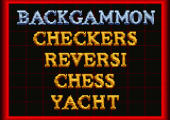
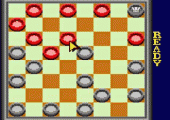
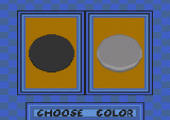
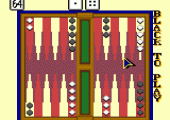
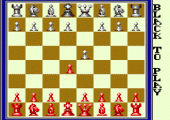
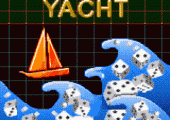
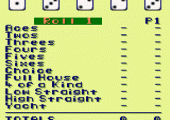
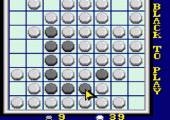
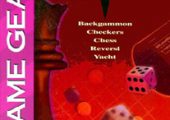
Recent Comments